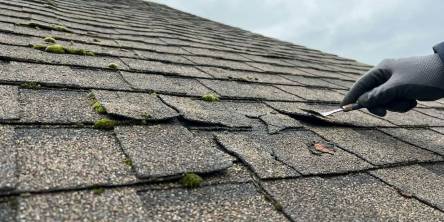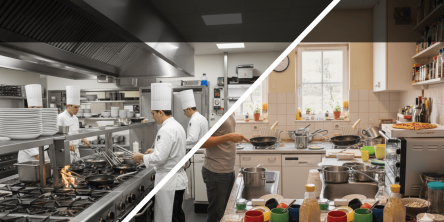The Skylight That Opens Your Roof to Outdoor Living

City homes face a constant challenge around outdoor space. Gardens are small or nonexistent, balconies are narrow, and any outdoor area feels precious. At the same time, these homes often need better natural light in rooms that don't have enough windows. The usual solutions address one problem or the other but rarely both at once, which is why roof space becomes increasingly important in urban properties where every square meter counts.
Traditional approaches treat roofs as either enclosed spaces with skylights for light, or open terraces for outdoor access. The middle ground, where a space can be both things depending on what's needed, hasn't been widely available until relatively recently. This flexibility matters particularly in British weather where outdoor space that's unusable half the year feels wasteful, but permanently enclosed rooms miss opportunities for fresh air and direct connection to the sky.
How Opening Roofs Actually Work
The concept is straightforward enough, glazed roof sections that slide open to create outdoor access while remaining weatherproof when closed. Implementation is more complex because the system needs to handle rainwater effectively, seal properly against wind and weather, and operate reliably over years of use without constant maintenance.
Modern systems including sliding skylight installations use tracks and rails that allow glazed panels to slide back over fixed sections of roof, creating openings large enough to use the space as a terrace when weather permits. When closed, the same space functions as an enclosed room with natural light from above. The transition between these states takes minutes rather than requiring construction work, which means the space adapts to weather and use rather than being fixed in one configuration.
The engineering involves more than just putting glass on rails. Water drainage needs to work whether the roof is open or closed, and the tracks can't create pools where water sits. Seals need to prevent rain getting through gaps in the closed position while still allowing panels to move freely. The structure supporting the whole system needs to handle both the weight of the glazing and the loads from wind when panels are open.
Where This Approach Makes Sense
Not every home benefits from opening roof glazing, and the situations where it works well are fairly specific. Single-story extensions in urban homes are prime candidates because they're often the only potential outdoor space available beyond tiny gardens. The extension roof becomes usable area that brings outdoor access without losing the enclosed room underneath when weather isn't cooperative.
Top-floor apartments with roof access face similar situations. Adding a fixed roof terrace might trigger planning issues or create a fully exposed space that's unpleasant in wind and rain. Enclosing the terrace completely means losing outdoor access entirely. Opening roof glazing provides the middle option where the space can be sheltered but still accessible to fresh air and direct sunlight.
Loft conversions sometimes use opening roof systems to create rooftop access without building full dormer structures that change the building's external appearance. The glazing sits relatively flat to the roof line, which can be less visually intrusive than dormers while still creating usable space. Planning permission considerations often favor approaches that don't dramatically alter roof profiles, which makes sliding roof glazing attractive in conservation areas or where planning consent is challenging.
The Reality of Using Flexible Roof Spaces
Opening roofs sound ideal in concept, but the practical experience depends on several factors that aren't always obvious during planning. The first is weather exposure. Even when glazing is open, the space is still within walls, which provides more shelter than a fully open terrace. This matters in British weather where wind and rain often make exposed terraces unusable even when temperature would otherwise be fine.
The second factor is how often the roof actually gets opened. Systems that require significant effort to operate or that are slow to open and close tend to stay in one position most of the time. The flexibility that was the point of the installation doesn't get used because it's too much hassle. Better systems with easy operation and quick transitions between open and closed positions get used more, which means the space actually adapts to conditions rather than defaulting to one state.
Noise can be another consideration, particularly in urban areas. When the roof is closed, the glazing provides some sound insulation from traffic, neighbors, and overhead aircraft. When open, the space is exposed to all the ambient noise of the surroundings. For some locations this isn't an issue, but in noisy urban areas it affects how pleasant the space is to use when open.
Structural and Planning Considerations
Adding opening roof glazing isn't as simple as installing a standard skylight. The structural requirements are more demanding because the system needs to support larger glass panels and the mechanical components that allow movement. Existing roof structures sometimes need reinforcing to handle the loads, which adds cost and complexity to installations.
Planning permission can be required depending on the specifics of the installation and local planning policies. Changes to roof lines, additions that affect the building's external appearance, or work in conservation areas all potentially trigger planning requirements. Some opening roof systems are more likely to need permission than others based on how they alter the building's profile and whether they're visible from street level.
Building regulations apply to all roof work, covering structural adequacy, thermal performance, and safety. The glazing needs to meet energy efficiency standards, which usually means sealed units with appropriate thermal properties. Safety requirements address what happens if glass breaks and whether the system creates fall risks when open. These regulations are sensible protections but they do constrain what's possible and add to the specification requirements.
Cost Implications Beyond Initial Purchase
Opening roof systems cost substantially more than fixed skylights covering the same area. The mechanical components, additional structural requirements, and installation complexity all drive up the price. A rough comparison might be two to three times the cost of fixed glazing for equivalent roof area, though this varies based on system complexity and installation specifics.
Maintenance requirements are higher as well. Moving parts need occasional attention to keep operating smoothly, seals need checking and replacing over time, and tracks need cleaning to prevent debris affecting operation. This isn't daily maintenance, but it's more than fixed skylights require. Budgeting needs to account for both the initial cost premium and the ongoing maintenance that keeps systems working properly.
The other cost consideration is energy efficiency. Glazed roofs inherently have worse insulation than solid roofs, and opening systems with moving panels generally don't seal as tightly as fixed glazing. This affects heating costs in winter and potentially cooling costs in summer if the space gets too hot. The trade-off might be worthwhile for the flexibility gained, but it's worth understanding that there are ongoing energy implications.
Making Spaces Work Year-Round
The homes that get the most value from opening roof glazing are those that actually use the flexibility rather than treating it as either an enclosed room or an outdoor terrace. This means having furniture that works for both configurations, considering how the space functions in different weather, and developing habits around opening and closing the roof based on conditions.
Weather monitoring helps, whether through apps or just paying attention to forecasts. Opening the roof for good weather and closing it before rain arrives makes the space usable more often than leaving it in one state. Some systems integrate with home automation to close automatically when rain is detected, which removes some of the manual management.
The psychological impact of having access to sky and weather, even in an urban home, shouldn't be underestimated. Spaces where the roof can open feel different to use than fully enclosed rooms, creating more connection to the outdoors even in city centers where actual outdoor space is minimal. Whether this justifies the cost premium depends on individual priorities, but for people who value outdoor access and natural light, the combination that opening roof glazing provides can meaningfully improve how urban homes feel to live in.
Similar Articles
Refresh your driveway without replacing it. Discover budget-friendly cleaning, repair, resurfacing, and design ideas that boost curb appeal and durability.
We all know that roofs don’t last forever, but how do you know when it's really time to replace yours? After all, your roof is out of sight, out of mind, right?
As winter settles in and temperatures drop, families across the country brace themselves for the inevitable spike in energy bills.
Wooden floors have long been the subject of admiration for their classic beauty, natural warmth, and strength.
When it comes to giving your home a fresh coat of paint, most homeowners focus on choosing the perfect color and finish.
The holiday season transforms neighbourhoods into glowing wonderlands, but today's homeowners are moving beyond the traditional approach of simply stringing lights wherever they fit.
Anyone who's worked in a commercial kitchen knows they operate with an efficiency that home kitchens rarely match.
When you want to transform your home with a complete makeover, you must find the best ways to save money. Let's check some cost-saving tips for renovating.
Handrails are one of the few things that merge safety, fashion, and structural importance in a home most naturally when the home is being either designed or renovated.









